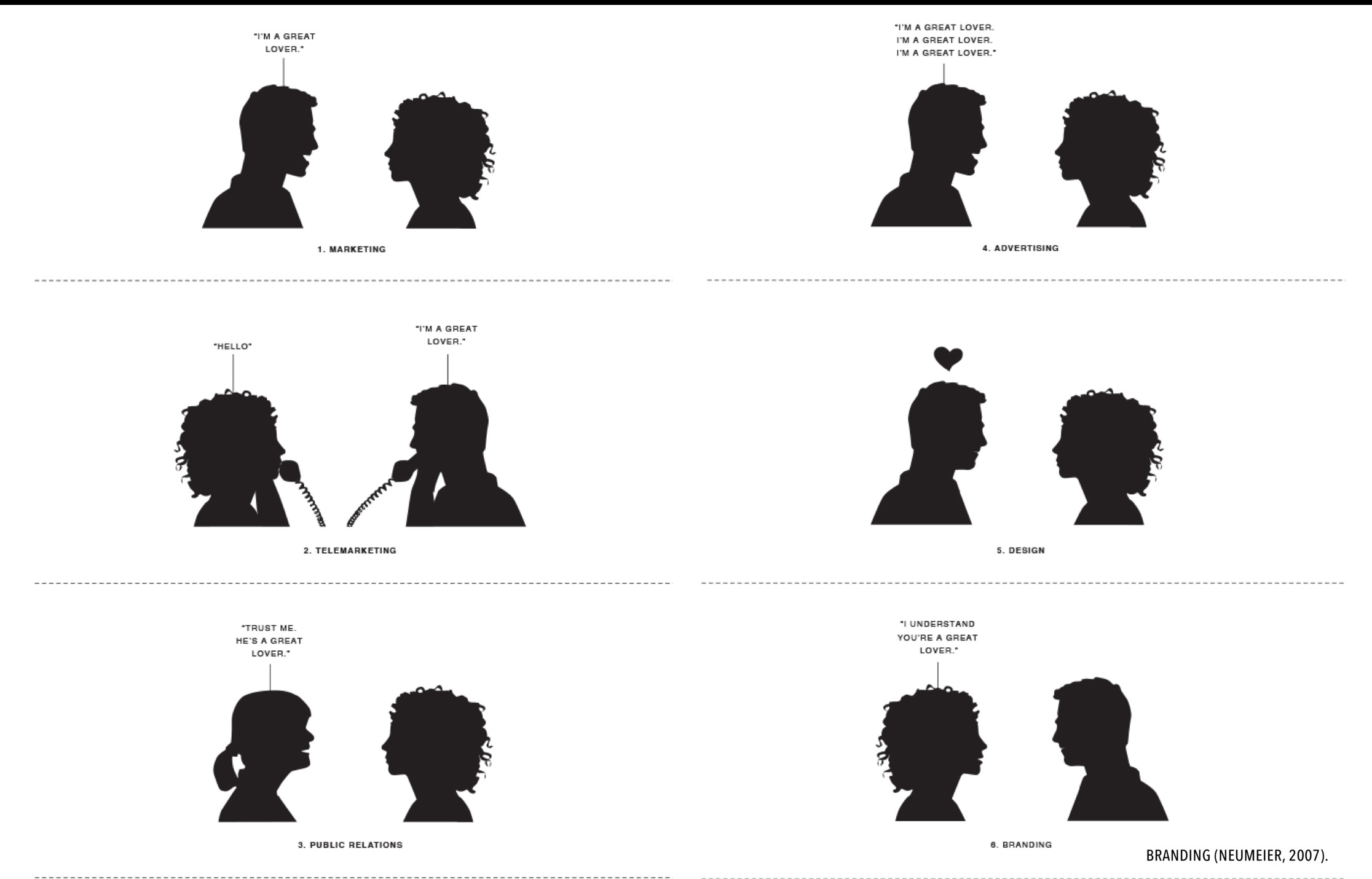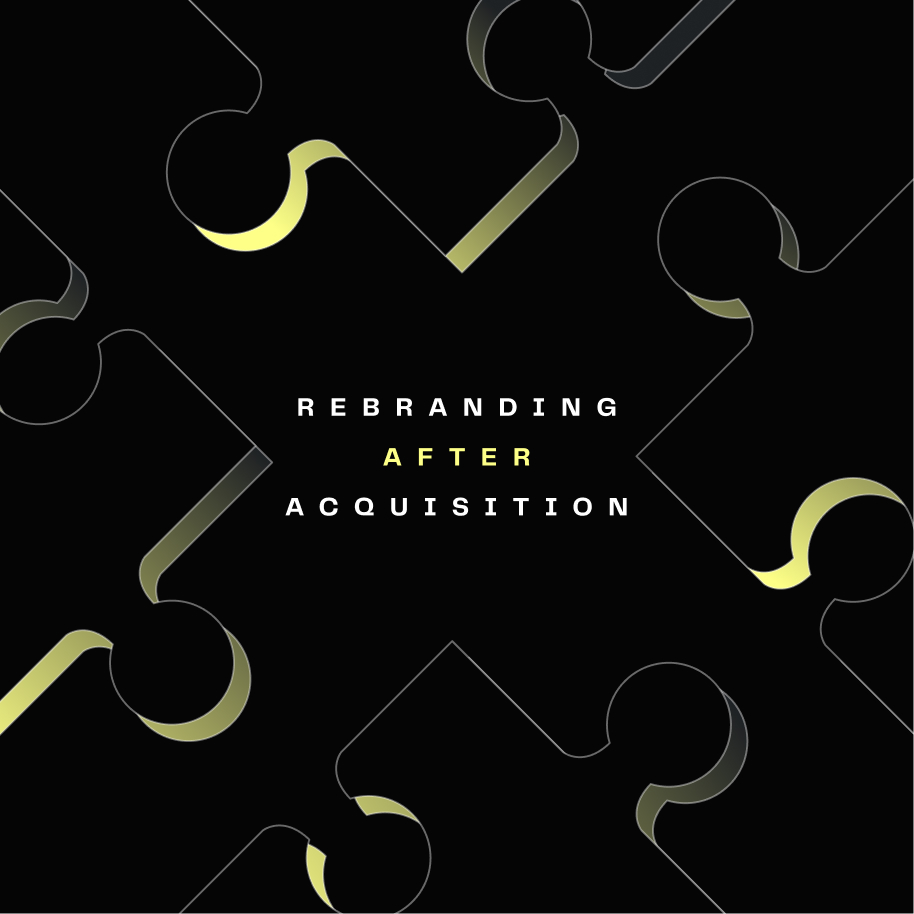Branding can be so difficult to measure that it feels like a Sisyphean task.
But there’s a reason why so many brands are revisited from time to time. Maybe your organization is in acquisition mode, and you need to fold in the companies you’ve acquired. Maybe your company is going public, and you need to have a brand ready for primetime. Or you might just need to hit reset after a major business crisis.
Whatever the reason, branding is a common and ongoing exercise for most organizations. In fact, 74% of S&P 100 companies have reworked their image within their first seven years of operation. Further, most organizations repeat the branding process every seven to 10 years, with refreshes in between.
Because branding is a major investment that involves multiple stakeholders, it’s important to know what your objectives are and how to assess the return on investment. Below are a few things to consider as you move forward with any branding project.

Decide why you are rebranding.
When you decide it’s time to revisit your brand in some way — whether through a rebrand or refresh — start by asking yourself why you are even pursuing this effort in the first place.
Is your brand growing stale and becoming outdated? Is your brand losing market share or share of voice? Is your brand failing to connect with customers and leaving room for your competitors to step in? Have you faced a recent crisis? Are you preparing to go public? Are you expanding into international markets? Are you trying to seek new investors? Or are you trying to sell? These are just a few of the many reasons why many organizations need to revisit and rework their brands.
Consider Coca-Cola. When it decided to refresh some of its branding efforts, its primary goal was to connect with a younger audience. The brand defined success as increased market share, more positive customer sentiment and a boost in sales among its core demographic.
As another example, Airbnb wanted to expand its offerings beyond accommodations. The brand’s success markers were built around website traffic, improved user engagement and positive feedback from both hosts and guests.
By taking this same step for your organization, you will ensure alignment, clarity and direction for everyone in your organization when going through with any branding project. What’s more, defining success upfront sets expectations and manages stakeholders’ perceptions. Finally, it allows you to communicate clear benchmarks so that everyone knows what success looks like
Involve key players.
Once you’ve established your top-level KPIs for a branding project, you should go a level deeper. Talk to every department within your organization to determine what matters to them, and make sure they feel brought along throughout the process. From your executive team to department leadership, each internal stakeholder brings an important perspective to the table.
External entities, such as private equity firms and holding companies, should also be a part of this process, as they have a major stake in any branding effort.
Understanding how each of these stakeholders measures success is essential.
How departments at your organization might measure branding success.
- Company ownership: impact on organization’s valuation, return on investment, long-term growth potential, alignment with overall brand portfolio, increased brand equity, improved market positioning, potential to sell the company
- Human resources: employee adoption and buy-in, effective internal communication, positive impact on employee morale, recruitment
- Marketing: increased brand awareness, positive brand sentiment, positioning and differentiation from competitors, how the brand scales across channels, customer engagement and satisfaction, increased customer lifetime value
- Sales: increased lead generation, higher quality sales pipeline, improved sales conversion rates, positive customer and prospect response to rebrand, differentiation from competitors
- Customer service: customer understanding and alignment, monitoring customer feedback, resolving rebrand-related issues, seamless customer transition, increased customer retention and satisfaction
For each department above — and any others you think might be missing — make sure you have a liaison for your organization’s branding project. That person could be the department head or any member of their team. Having a point person from every team across your organization will ensure everyone has some skin in the game.
Enlist a branding expert.
Once everyone is bought in on the need for a branding project, you might consider enlisting the help of an agency partner. Branding experts bring a wealth of experience and knowledge to the table to help you navigate the complexities of the rebranding process with confidence.
A branding partner can also assist you with an audit of your brand, which will help you define your goals and KPIs. They will also keep you on schedule while wrangling your stakeholders for feedback and reviews. And they can help with your brand development, launch and measurement.
Brand-tracking studies.
On the measurement front, an outside expert can help you more acutely prove ROI through a brand-tracking study. While these studies are more of a monetary investment, they are also an excellent way of tracking exactly how you’ve moved the needle through your brand-building efforts.
Brand-tracking studies come in many forms but should always look at the metrics that matter most to you — whether that’s increasing brand awareness, improving brand sentiment or solidifying a certain brand position.
To kick things off, your branding partner should work with you to understand your goals and KPIs. Then, they should help you procure a representative sample of your target audience (whether that’s through your own database or a third-party vendor). From there, they should create a survey that assesses how your brand is performing among your sample audience based on the goals and KPIs you’ve already aligned on.
As a general rule, brand-tracking surveys should be conducted before your brand launches, to establish benchmarks, and then conducted again after your brand launches. Because most brand-building efforts take a while to gain traction, we recommend waiting at least six months post brand launch to re-survey your audience. You can also set up pulse surveys to take a temperate check periodically, at the exact cadence of your choosing.
Conduct a brand audit.
Whether conducted in-house or with the help of an outside expert, a brand audit will give you valuable insights into the current state of your brand, potential areas for improvement and baseline metrics for proving ROI. In other words, a brand audit lays the groundwork for your entire branding effort. It can also help establish more qualitative benchmarks to complement a more quantitative brand-tracking study.
Elements of a typical brand audit.
- Internal materials: review of all your current brand, marketing, sales, HR and internal communications materials
- Competitive analysis: looking at your brand’s positioning and visual/verbal identity relative to your competitors’ — typically looking at up to five competitors
- Interviews: customer and internal stakeholder insights that speak to your brand’s current strengths and weaknesses
After your brand launches, monitor & measure.
With your objectives and KPIs in order — and your new brand complete and ready for debut — it’s time to launch and monitor the ROI of your efforts.
You’ll want to regularly monitor and measure your brand’s impact with the KPIs you’ve set for each department. At a higher organizational level, below are a few major brand health indicators to watch out for.
Major indicators of brand health.
- Brand awareness and perception: brand awareness levels, brand sentiment, share of voice, social listening
- Customer engagement and satisfaction: Net Promoter score, other survey results, public reviews, word of mouth, churn rate, features adoption/usage, social media engagement
- Business performance: market share, sales revenue, profit margins, employee recruitment and retention
Of course, if you’ve decided to invest in a more formal brand-tracking study, this monitoring and measuring phase will already be baked into the process.
Either way, remember that measuring and optimizing your brand is an ongoing effort. Continue to assess your brand’s effectiveness based on the metrics that matter most to you, and adapt to any changing customer or market dynamics, as necessary.
All things considered, measuring the impact of your brand doesn’t have to be grueling. Understanding the ROI of these efforts simply requires careful planning and clear execution — and choosing the right agency partner is a surefire way to set yourself up for success. On that note, if you ever need of a proven partner, know that Sunup is here to help.



